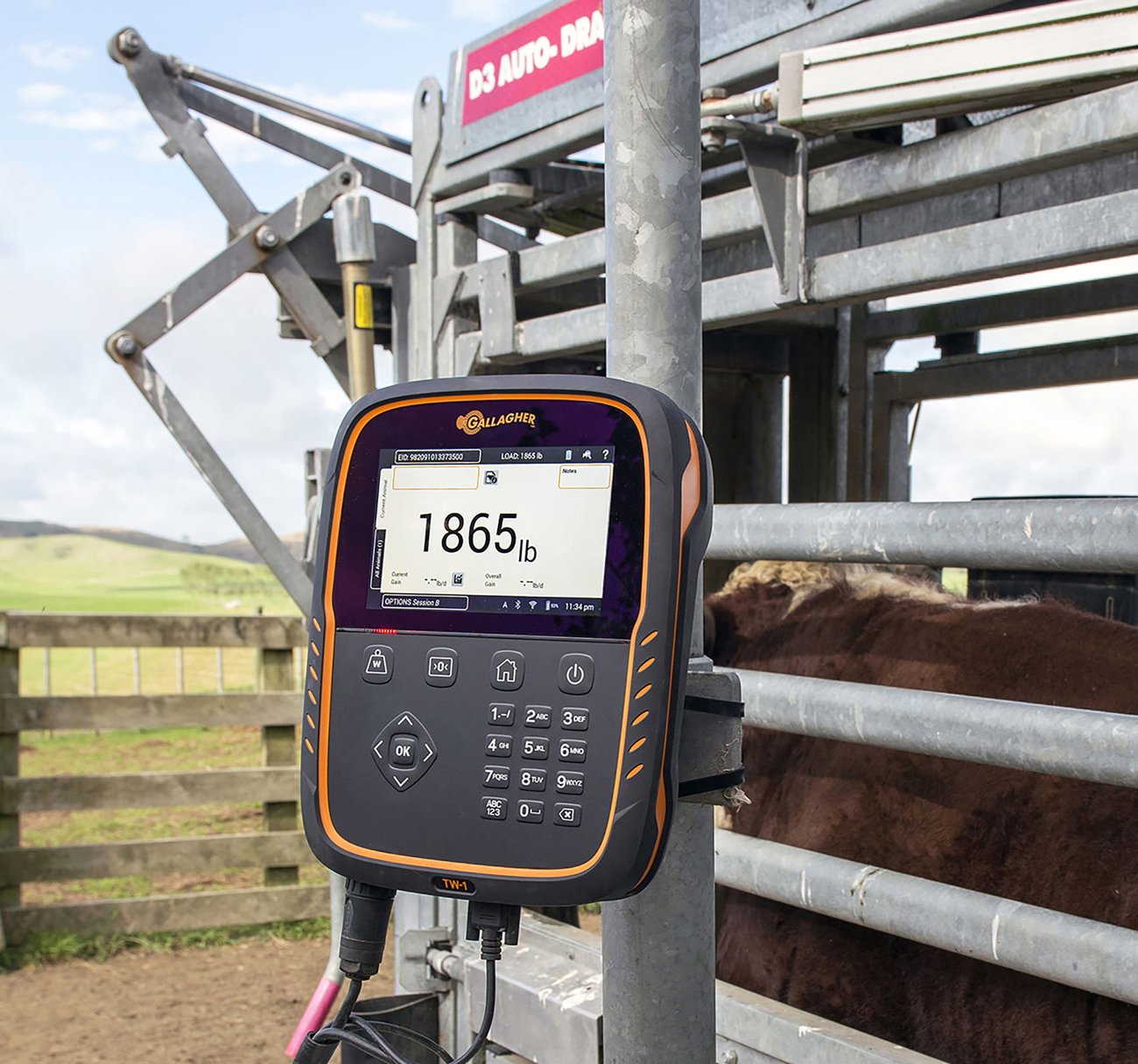Gallagher TW Series Weigh Scale: Gallagher and Massey combine for agribusiness innovation that shows ‘Kiwi design in the best possible way’

Working on a farm is tough work, as anyone who has done so can attest. It’s also often quite dirty – a lot of the work involves working with animals or the soil, after all, and often in less-than-ideal (see: rainy) conditions. And that, of course, means it can be incredibly tough on the tools being used.
But the folks at Gallagher Animal Management Systems know all about working on farms – and also that farmers need equipment that’s durable no matter how much wear and tear or extreme the weather is. So it’s probably no surprise that the Gallagher TW Series Weigh Scale can withstand almost anything – but it might surprise some people with how incredibly high-tech it is.
Encasing a complex digital animal management tool in a rugged, yet simple product design that pushes past the boundaries of functionality, the Gallagher TW Series Weigh Scale allows for weighing animals, data collection, monitoring and analysis, all by reading radio-frequency identification (RFID) tags attached to animals. Boasting an easy-to-read, seven-inch (about 18-centimetre) screen, it can be used for almost any kind of livestock, whether it’s sheep, cows, alpacas, or even – theoretically, at least – capybaras or wombats.



The simplicity of the device – designed with the assistance of the Massey University College of Creative Arts – is actually one of its key design features. With so much technology behind it, and with so many demands on a farmer’s time, being able to use the device quickly and efficiently is key. The whole thing weighs just 2.2 kilogrammes and measures 295 millimetres high by 235 millimetres wide by 80 millimetres deep, meaning it’s about the same size and a bit thicker than your typical iPad or tablet. That also means farmers can carry it easily around with them as they work – important if they’re working on land that can be hundreds of hectares (or more) in size and don’t have time to take animals across long distances to a central location to get the same data.


Judges said the design “is a truly Kiwi design in the best possible way.” Given Aotearoa’s rural roots and long track record of practical innovations – particularly in the agricultural sector – it’s hard to argue with their sentiments.






